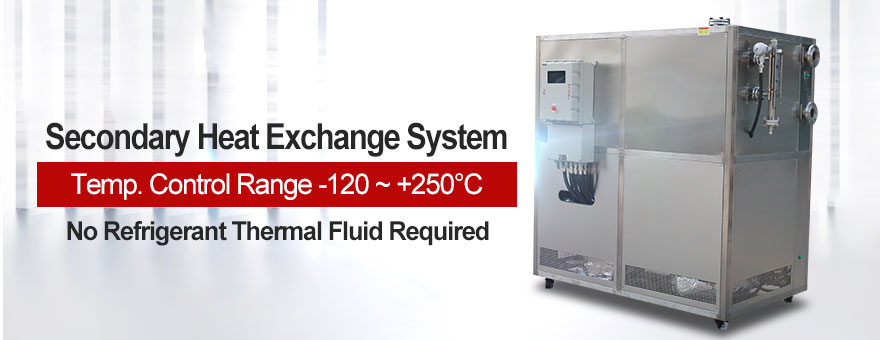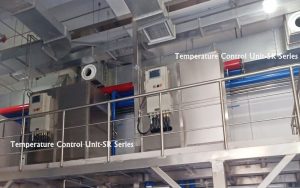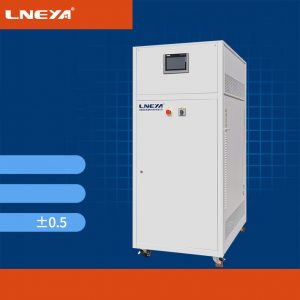Buy TCU-Multiple Reactor Cooling Heating Temperature Control System
Researchers who do research work know that during the laboratory experiments, TCU-multiple reactors are often used for cooling and heating temperature control systems or high and low temperature all-in-one machines, so TCU-multiple reactions that can provide cold or heat The cooling and heating temperature control system of the kettle has become indispensable. Generally, the cooling and heating temperature control system of the TCU-multiple reaction kettle is used to cool down or constant temperature the equipment.
Points to note when purchasing TCU-multiple reaction kettle cooling heating temperature control system:
How to choose TCU-multiple reaction kettle cooling and heating temperature control system? First determine the temperature range to be used. Different temperature control requirements require different temperatures and different prices. The second is to determine the flow rate and jacket area, the flow rate and the volume of the jacket surface. The larger the amount of heat transfer oil or refrigerant installed, the larger the amount of cooling will be, and its price will be very expensive; later, we will look at the use of TCU-multiple reactor refrigeration heating temperature control system Environment need custom isolation explosion-proof style? If you do n’t use it, you can use a stainless steel shell. If you want to customize it, you can choose a custom-isolated explosion-proof TCU-multiple reactor cooling and heating temperature control system.
TCU-Multiple reaction kettle refrigeration heating temperature control system purchase and features:
It adopts a fully-enclosed pipe design and a relatively plate heat exchanger, which reduces the demand for thermal fluid and improves the heat utilization rate of the system to achieve rapid temperature rise and fall. The heat-conducting medium is in a closed system with an expansion container. The heat-conducting medium in the expansion container does not participate in the cycle. Whether it is high or low temperature, the expansion tank temperature is from normal temperature to 60 degrees, which can reduce the absorption of moisture and volatilization of the heat-conducting medium during operation. risk. Such principles and functions have many advantages for users:
Because only the thermally conductive medium in the expansion chamber is in contact with oxygen in the air (and the temperature of the expansion tank is between normal temperature and 60 degrees), the risk of the thermally conductive medium being oxidized and absorbing moisture in the air can be reduced.
At high temperatures, no heat-conducting medium evaporates, no need to replace the heat-conducting medium, and continuous temperature control of -55 to 250 degrees can be achieved without pressurization.
A heating system host + refrigerant control heat exchange unit can control up to 2 to 20 reactors of different sizes, and each reactor can be controlled at a different temperature.
Raccomandazioni correlate
-
Unità di controllo della temperatura necessaria per l'estrazione della materia prima chimica della medicina cinese-TCU
1834Il processo di produzione delle materie prime della medicina tradizionale cinese è relativamente complicato: un processo lungo, molte condutture e operazioni complicate; inoltre, la maggior parte delle materie prime di preparazione sono instabili, come gli elevati parametri ambientali...
Visualizza dettagli -
Come funzionano i refrigeratori CVD e PVD per semiconduttori?
1645Il principio di funzionamento dei refrigeratori utilizzati nei processi di deposizione chimica del vapore (CVD) e di deposizione fisica del vapore (PVD) dei semiconduttori consiste principalmente nel rimuovere il calore generato durante il processo facendo circolare acqua di raffreddamento o...
Visualizza dettagli -
Refrigeratori a bassa temperatura
1581Il refrigeratore a bassa temperatura è diventato negli ultimi anni un'apparecchiatura di refrigerazione industriale molto importante. È ampiamente utilizzato in campo industriale. Molte produzioni industriali devono fare affidamento su di esso per ottenere condizioni di refrigerazione ideali. Quindi, per la refrigerazione a...
Visualizza dettagli -
Product Features of Fluid Heat Transfer Temperature Control System
1656The fluid heat transfer temperature control system is the refrigeration and heating device of the matching reactor reactor in the pharmaceutical chemical industry. So, what are the characteristics of the fluid heat transfer temperature control sys...
Visualizza dettagli
 Refrigeratori industriali LNEYA Produttore Fornitore
Refrigeratori industriali LNEYA Produttore Fornitore













